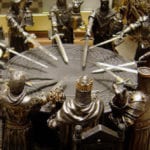 Crime
Crime  Crime
Crime  Technology
Technology 10 Hilariously Over-Engineered Solutions to Simple Problems
 Miscellaneous
Miscellaneous 10 Ironic News Stories Straight out of an Alanis Morissette Song
 Politics
Politics 10 Lesser-Known Far-Right Groups of the 21st Century
 History
History Ten Revealing Facts about Daily Domestic Life in the Old West
 Weird Stuff
Weird Stuff 10 Everyday Products Surprisingly Made by Inmates
 Movies and TV
Movies and TV 10 Actors Dragged out of Retirement for One Key Role
 Creepy
Creepy 10 Lesser-Known Shapeshifter Legends from Around the World
 Animals
Animals 10 Amazing Animal Tales from the Ancient World
 Gaming
Gaming 10 Game Characters Everyone Hated Playing
 Crime
Crime 10 Terrifying Serial Killers from Centuries Ago
 Technology
Technology 10 Hilariously Over-Engineered Solutions to Simple Problems
 Miscellaneous
Miscellaneous 10 Ironic News Stories Straight out of an Alanis Morissette Song
Who's Behind Listverse?

Jamie Frater
Head Editor
Jamie founded Listverse due to an insatiable desire to share fascinating, obscure, and bizarre facts. He has been a guest speaker on numerous national radio and television stations and is a five time published author.
More About Us Politics
Politics 10 Lesser-Known Far-Right Groups of the 21st Century
 History
History Ten Revealing Facts about Daily Domestic Life in the Old West
 Weird Stuff
Weird Stuff 10 Everyday Products Surprisingly Made by Inmates
 Movies and TV
Movies and TV 10 Actors Dragged out of Retirement for One Key Role
 Creepy
Creepy 10 Lesser-Known Shapeshifter Legends from Around the World
 Animals
Animals 10 Amazing Animal Tales from the Ancient World
 Gaming
Gaming 10 Game Characters Everyone Hated Playing
10 Reasons Why Knights Were Terrible Warriors
The knights of medieval Europe are among the most recognized warriors of human history. They played a key role in the society and warfare of the Middle Ages, and their ideals of chivalry survive to this very day. What many don’t realize, however, is that knights weren’t actually all that great as a fighting force. Below are 10 reasons why knights made absolutely terrible warriors.
10 They Were A Logistical Nightmare

If there was one factor that greatly limited the destructive nature of war in the Middle Ages, it was logistics—the supplying, housing, and movement of armies. Without centralized control, it was difficult for feudal rulers to marshal enough resources and authority to carry out large-scale military campaigns.
Logistically speaking, knights were a huge burden. For starters, a knight never went to war alone. At the very least, he brought a squire, who would carry his armor and tend to his horse but wouldn’t participate in combat. To make matters worse, knights took at least two horses with them—a riding horse and a warhorse, which was used exclusively for battle. As a result, medieval armies had to feed not only the knight himself, but also his horses and retinue.
The horses’ need to graze further restricted the speed of an army’s movement and made warfare a difficult proposition in winter or in arid climates. A great example of these logistical burdens comes from the Crusades, where one of the leading causes of death for knights was actually lack of fodder and water for their horses, rather than combat.
9 Limited Service

While the specifics varied from country to country and over time, the feudal obligation of knights only required them to provide military service for about 40 days per year. This was a major limiting factor for both how long, and to what geographical extent, war could be conducted. Worse yet, knights could refuse service altogether and instead pay a fee called scutage. In 13th-century England, for example, it is estimated that 80 percent of the country’s 5,000 knights chose to pay scutage instead of going to war.
These limitations were a major reason for the rapid development of infantry tactics in the 14th century as well as the increased use of mercenaries, particularly in England. By the Hundred Years’ War, the English army was composed almost entirely of paid men.
In particular, the practice of hiring men-at-arms—mercenaries who had all of the equipment of a knight but were not necessarily nobles—became increasingly widespread. These men could serve as long as they were paid and were also more experienced and disciplined than knights. By the time of the Battle of Agincourt in 1415, knights constituted only about 8 percent of English heavy cavalry.
8 They Were Expensive

Because of their elaborate armor, weapons, and powerful horses, knights were incredibly expensive. The equipment of an English knight, by one figure, was worth about 32 Anglo-Saxon pounds by the mid-13th century, about 10 years’ worth of wages for an archer. By contrast, an archer could be fully equipped for about 4 percent of that cost.
The knight’s most prized possession was the warhorse, which could cost as much as £300. (An average craftsman at the time would only make a few pounds a year.) Furthermore, if a medieval ruler wanted to maintain a group of knights for longer than their feudal obligation, he usually had to pay them money. Knights didn’t come cheap; they cost roughly twice as much as a man-at-arms of commoner background.
The bottom line is that for the cost a single knight, it was much more pragmatic to equip a dozen infantrymen or archers or to hire other men-at-arms for half the cost. Based on the rapidly falling numbers of knights in English armies from the 14th century forward, this lesson was not lost on medieval rulers.
7 Adherence To Chivalric Ideals
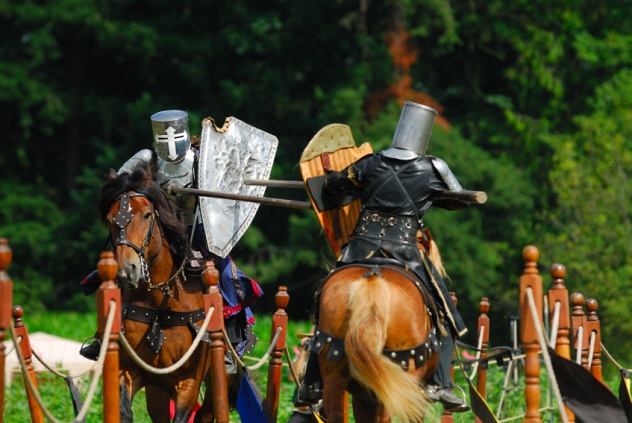
In war you kill or get killed, so it’s crucial to use whatever you can to your advantage. Knights, however, held an idealized view of the battlefield. While some of these ideals, like courage, were useful in combat, others were detrimental. For example, there was the expectation that knights should battle other knights on fair terms, and if they were defeated and withdrew, they should not be pursued. There was also a widespread practice of taking defeated knights as hostages and ransoming them back, rather than killing them outright.
One famous example of knightly ideals backfiring on the battlefield was the Battle of Kutna Hora in 1421, where forces of the Holy Roman Empire led by King Sigismund fought a group of Bohemian rebels known as the Hussites. The rebels were surrounded but managed to break through and make a last-minute escape. Sigismund chose to courteously allow Jan Zizka, the Hussite leader, to withdraw without being pursued, presuming him to be utterly defeated. This, however, was a grave mistake. After spending the next month gathering reinforcements, Zizka returned and caught Sigismund completely unaware, ultimately driving his armies out of Bohemia.
Meanwhile, England’s King Henry famously broke the rule of taking knights hostage at the Battle of Agincourt. Fearing that the French were mounting a counterattack, he ordered the execution of roughly 2,000 surrendered French knights to prevent them from taking up arms. The English knights disobeyed the order, but from a practical standpoint, Henry made the right move.
6 Poor Leadership
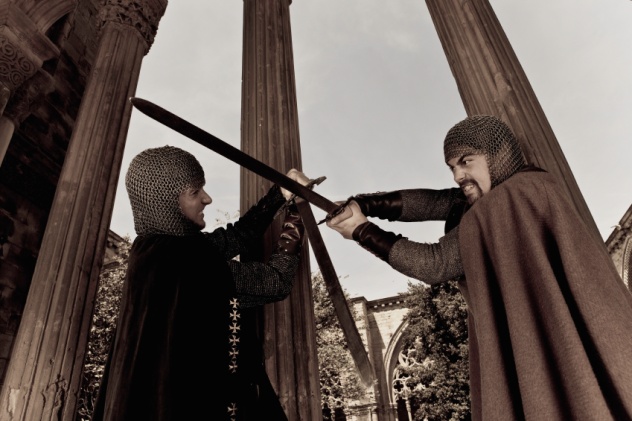
If there is one area in which we can excuse the knights themselves, it’s leadership. By and large, the men who commanded feudal armies were little more than glory-seeking nobility with no actual military training. Some armies did luck out with having effective generals such as King Edward III of England, but they were the exception, not the rule. The French in particular were notorious for using their knights without any regard for terrain, strategy, and previous defeats.
Another problem was command structure. Since feudal kings had to rely on powerful nobles, who in turn brought their own hosts of knights, it was not always possible to exercise direct control over the whole army. Individual nobles could very well act on their own, and disagreements were common. The quarrels between the earls Gilbert de Clare and Humphrey de Bohun, for instance, played a major role in the English defeat at the Battle of Bannockburn in 1314.
Meanwhile, one the most ridiculous examples of poor leadership occurred at the Battle of Crecy, where John, the blind king of Bohemia, insisted on being led into battle by his knights so that he could strike an enemy. This went about as well as you’d expect; John and all of the knights were killed.
5 Lack Of Standardized Training
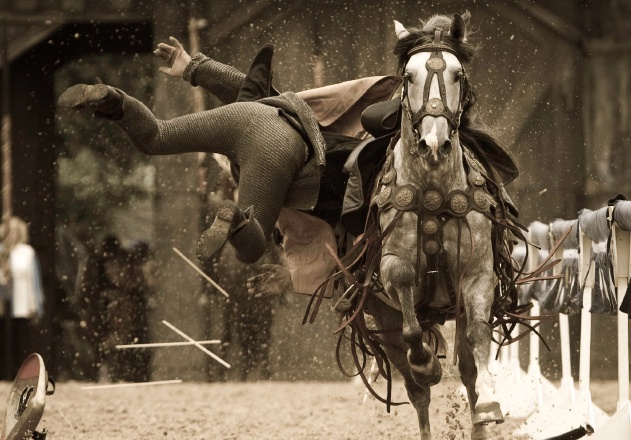
For hundreds of years, knights were the closest thing to professional soldiers in medieval Europe. They had years of training on how to ride horses, fight in armor, and use a variety of weapons, and medieval tournaments gave them a chance to keep their skills sharp in peacetime.
Nevertheless, that doesn’t change the fact that outside of training in their youth as pages and squires, there was no formal, standard system for training knights. Once an individual attained the rank of knight, it was fully up to him how to continue to hone his skills. As a result, when knights came together under one army, they had different capabilities and styles of fighting.
This put knights at an obvious disadvantage when faced with professional forces that followed a systematic training regimen. Soldiers such as the Swiss pikemen underwent a sophisticated system of battle drills, where they learned how to use their weapons, march together, and function as a unit. Such practices were important not only for developing military skills, but also because they gave everyone the same training, ensuring that soldiers were able to keep up with their peers and work together.
4 Poor Teamwork
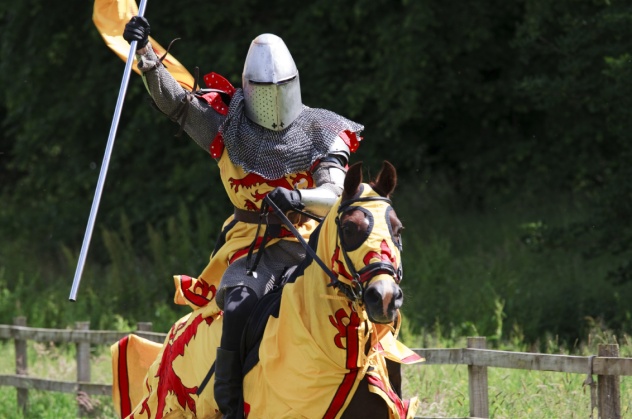
Discipline and organization are some of the most important aspects of warfare. This is a major reason why the Romans were so good at war. Knights, however, had a tendency to fight as individuals. The nature of feudal warfare was such that armies were assembled as they were needed. This meant that groups of knights from different parts of a country never had the chance to train together and learn how to function as a single unit.
There were some exceptions to this rule; knights who fought together in several campaigns were certainly more capable of working together. Orders such as the Knights Templar in particular developed an effective system which ensured that they operated as a disciplined and united force on the battlefield.
However, by and large, knights were individual fighters in search of personal fame and honor. The best that you could hope for is that they charged together once or several times. This also explains why cavalry charges were not always performed in an organized manner, with some knights riding ahead of the group.
3 Reliance On Favorable Terrain
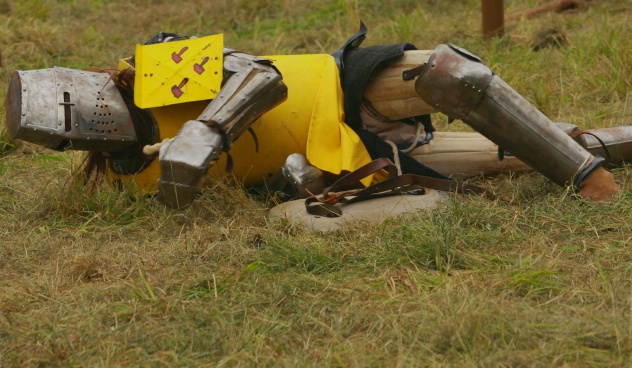
Given that knights rode horses, they required solid, flat, and open ground to be effective. If forced into a clash in mountainous or muddy terrain, they lost their mobility and shock value. The Scots, for example, famously defeated the English in the Battle of Bannockburn by utilizing the boggy terrain and by digging pits to break up any potential cavalry charge.
Another prominent example of using terrain against knights was Courtrai, also known as the Battle of the Golden Spurs, where, in 1302, a group of Flemish militia delivered a crushing defeat to French cavalry. The Flemish carefully chose a position with marshy ground that was surrounded by streams and moats. The resulting cavalry charge was slow and uneven, and some knights never made it to the enemy. Unable to break the Flemish lines, the noble men-at-arms were equally unable to retreat in the muddy ground. The French ended up losing over 1,000 knights, and the battle received its name from the golden spurs collected off their corpses.
The English were equally innovative in the Hundred Years’ War with France. In the Battle of Agincourt, they chose a position with soft ground and also built a line of stakes in front of their archers. The French cavalry charge was easily repulsed, and the English emerged victorious despite being outnumbered four to one.
2 Archers Ruined Their Day
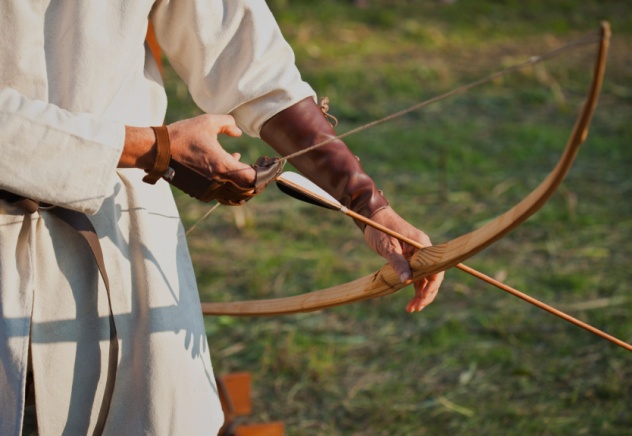
This may come as a surprise, but knights were actually quite vulnerable to archers. Mail armor could be pierced by bows from distances of 180 meters (600 ft), meaning that knights could get killed long before they got close. Better yet, experienced bowmen could fire a rate of 12 arrows per minute.
While the introduction of full plate armor in the 15th century was a big help, it didn’t make knights invulnerable to missile attacks. Crossbows were still capable of piercing plate, and even if bowmen were unable to kill a knight outright, they could target his horse instead. The arrows that didn’t hit still had a profound psychological impact on both the horse and its rider.
Archers were so deadly that knights developed a huge disdain for them, calling both the bow and the crossbow dishonorable, cowardly weapons. As noble-born warriors who saw themselves as superior in every way to common rabble, they were naturally disturbed by the possibility of an anonymous, low-born miscreant ending their life from a safe distance. The nobility even tried to get crossbows banned in the 11th and 12th centuries, because unlike bows, they required literally no expertise outside of aiming and pulling the trigger.
Numerous groups successfully deployed archers against knights in the Middle Ages, but none were more famous than the English during their Hundred Years’ War with France. Using the power of the Welsh longbow, numerically inferior English forces decisively defeated the heavily knight-reliant French armies in the Battles of Crecy (1346), Poitiers (1356), and Agincourt.
1 They Were Easily Defeated By Professional Infantry
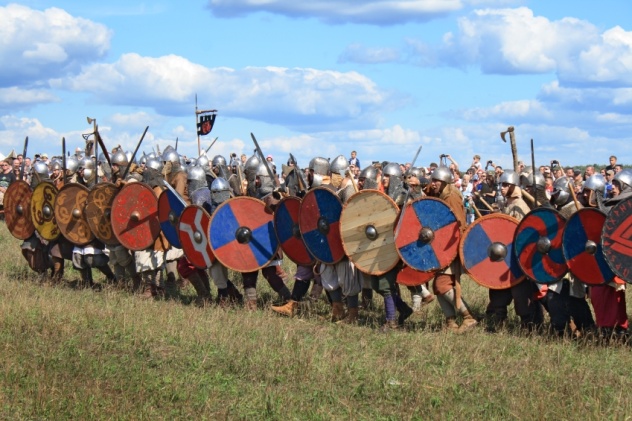
While well-trained archers were already a deadly force to contend with, professional infantry was the Achilles heel of the knight. Disciplined infantry soldiers deployed in phalanx formation and armed with pole-arm weapons such as pikes rendered heavy cavalry all but useless. Horses naturally refused to impale themselves by charging into a thicket of spears, and even if they did, all the infantrymen had to do was hold their ground.
So why did knights trump infantry for hundreds of years? The answer is simple: They rarely fought professionals. For most of the medieval period, knights faced peasants and freemen who made up the bulk of feudal armies. Neither of these groups had the proper training or equipment to stand up to a cavalry charge and would typically break ranks in fear of a charging mass of horse and man.
When knights did face professional infantry, it was a totally different story, and no group was better at demonstrating this than the Swiss. While largely overlooked by history in favor of their world-famous watches and cheese, the Swiss actually played a decisive role in exposing the weaknesses of knights and revolutionizing medieval warfare.
Encroached upon by feudal kingdoms on all sides, the Swiss city-states developed a professional militia force armed with halberds and pikes. These infantrymen were drilled constantly and were able to execute very complex maneuvers. Beginning in the 14th century, the Swiss delivered crushing defeats to the knight-centric forces of Burgundy and Austria, most famously in the Battles of Morgarten (1315), Laupen (1339), Sempach (1386), and Nancy (1477). The Swiss were so successful that the rest of Europe began to copy their tactics, making knights all but obsolete.
Gleb Oleinik is a freelance writer and web developer. He likes to recite meaningless historical facts and ponder the big questions of life. You can contact him by email.








